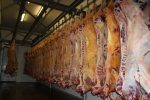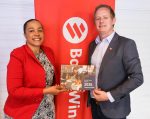The annual inflation rate for December 2022 in the Khomas region increased by 7.6 percent compared to 4.2 percent recorded during the same period of 2021, a report by the Namibia Statistics Agency (NSA) has said.
The increase was mainly due to increases in the price levels of Food and Non-alcoholic beverages (from 5.9 percent to 11.8 percent); Clothing and footwear (from -2.1 percent to 0.8 percent); Furnishing, household equipment and routine maintenance of the house (from 3.4 percent to 119.4 percent); Hotels, cafés, and restaurants (from 0.8 percent to 17.0 percent); Recreation and culture (from 3.1 percent to 8.6 percent) and Transport (from 14.0 percent to 15.3 percent).
On the other hand, Zone 1 (Kavango East, Kavango West, Kunene, Ohangwena, Omusati, Oshana, Oshikoto, Otjozondjupa, and Zambezi) recorded annual inflation rates of 6.5 percent, while Zone 3 (||Kharas, Erongo, Hardap, Omaheke) recorded an annual inflation rate of 6.4 percent. On a monthly basis, the Zone 1 and Zone 2, both registered inflation rate of 0.3 percent and Zone 3 recorded an inflation rate of 0.2 percent.
For Zone 1, the increase in the annual inflation rate resulted mainly from increases registered in the price levels of Food and non-alcoholic beverages (from 4.7 percent to 12.5 percent); Clothing and footwear (from -2.1 percent to 3.9 percent); Education (from -1.3 percent to 1.8 percent) and Hotels, cafes, and restaurants (from 2.8 percent to 5.7 percent). On a monthly basis, the inflation rate for December 2022 stood at 0.3 percent compared to 0.5 percent recorded a month earlier.
For Zone 3, the increase in the annual inflation rate emanated mainly from increases in the price levels of Food and non-alcoholic beverages (from 4.9 percent to 10.3 percent), Furnishing, household equipment and routine maintenance of the house (from 3.5 percent to 8.6 percent) and Education (from 0.8 percent to 7.0 percent). On a monthly basis, the inflation rate for December 2022 recorded a 0.2 percent compared to 0.5 percent recorded last month.
The average retail prices of selected products for the month of December 2022 revealed that consumers in Zone 3 paid the lowest price for honey (500g) at N$72.37 followed by Zone 2 at N$84.10 while consumers in Zone 1 paid the highest price of N$86.05. For Chicken, frozen assorted pieces per 1.5 kg, consumers in Zone 3 paid the highest price at N$78.33, while the lowest price was recorded in Zone 1 at N$69.49.
Overall, for the year 2022, the average annual inflation rate rose by 6.1 percent compared to 3.6 percent registered in the year 2021, mainly driven by the Transport inflation.
“In December 2022, the annual inflation rate increased by 6.9 percent compared to 4.5 percent recorded in December 2021. On a monthly basis, the inflation rate slowed to 0.3 percent compared to 0.5 percent recorded a month earlier. The main contributors to the annual inflation rate were Transport (2.2 percentage points); Food and non-alcoholic beverages (2.2 percentage points); Alcoholic beverages & tobacco (0.6 percentage points) and Housing, water, electricity, gas and other fuels contributed (0.2 percentages points),” the Agency said.
Inflation is calculated based on a basket of goods and services, containing a representative sample of the goods and or services commonly consumed in a country, and weighted in accordance with the relative percentage of expenditure allotted to each of the said goods at household level. The price of these goods and services are then tracked over time, to illustrate the change in the cost of living over time. As spending patterns change, new products and services are added to the basket, and the basket is reweighted to better capture the current spending patterns of the consumer at the current point in time.
As such, the inflation basket is generally reconstituted every five years. In Namibia, the basket was last rebased in 2013, using household expenditure data collected in the 2009/10 Household Income and Expenditure Survey. The basket now contains over 350 items, grouped into 12 categories and 55 sub-categories, for which prices are collected monthly from more than 900 retail outlets.










